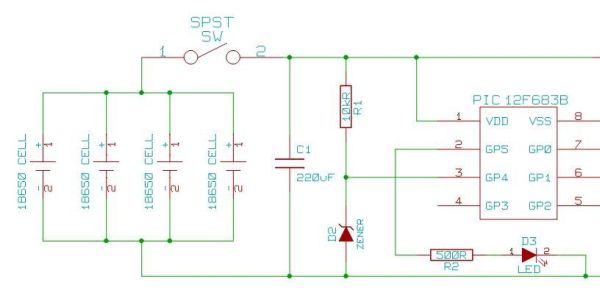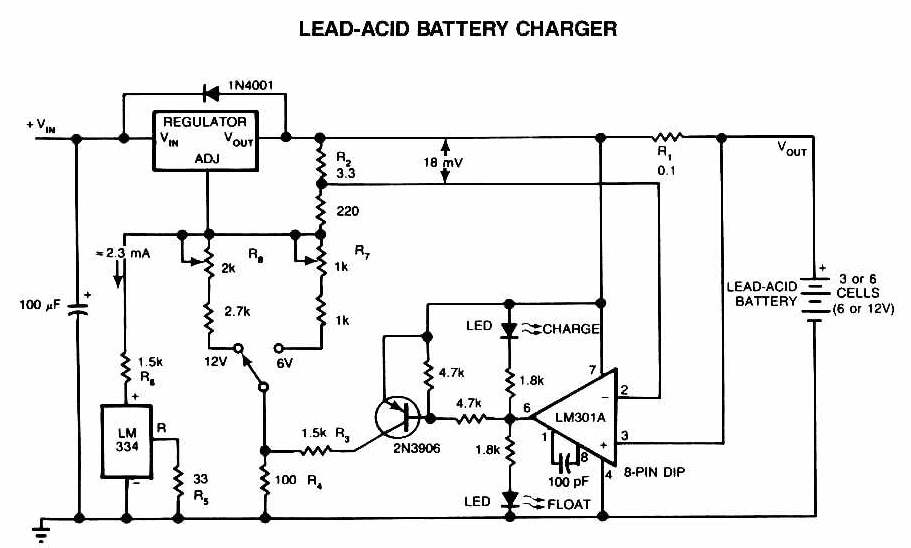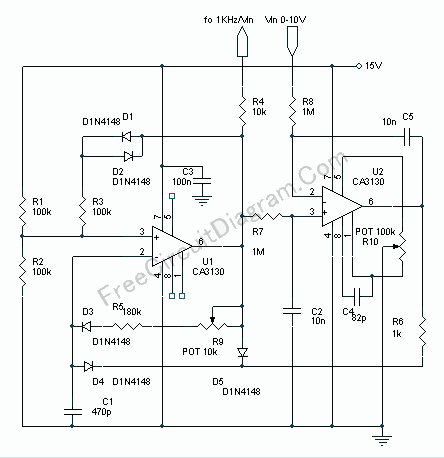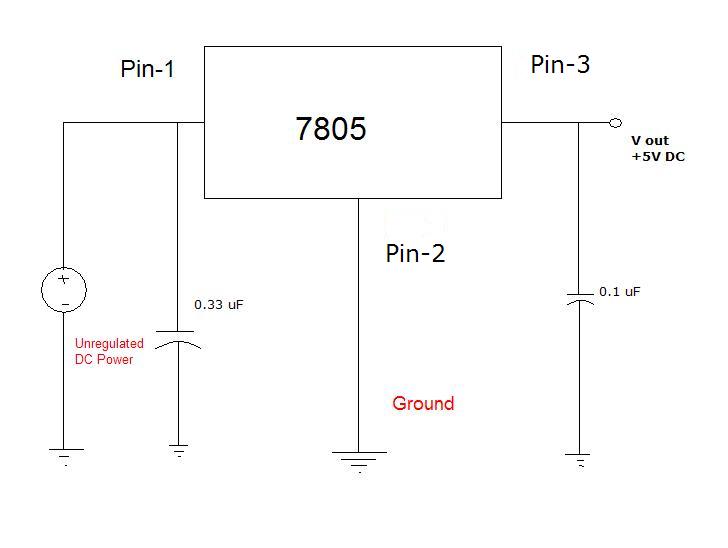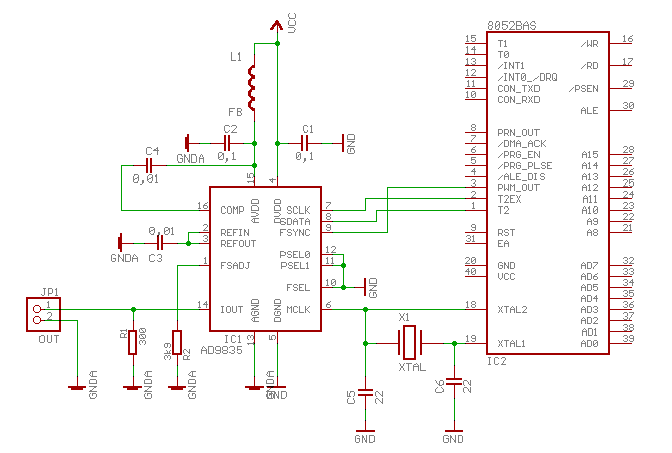
DTMF decoder using MT8870DE
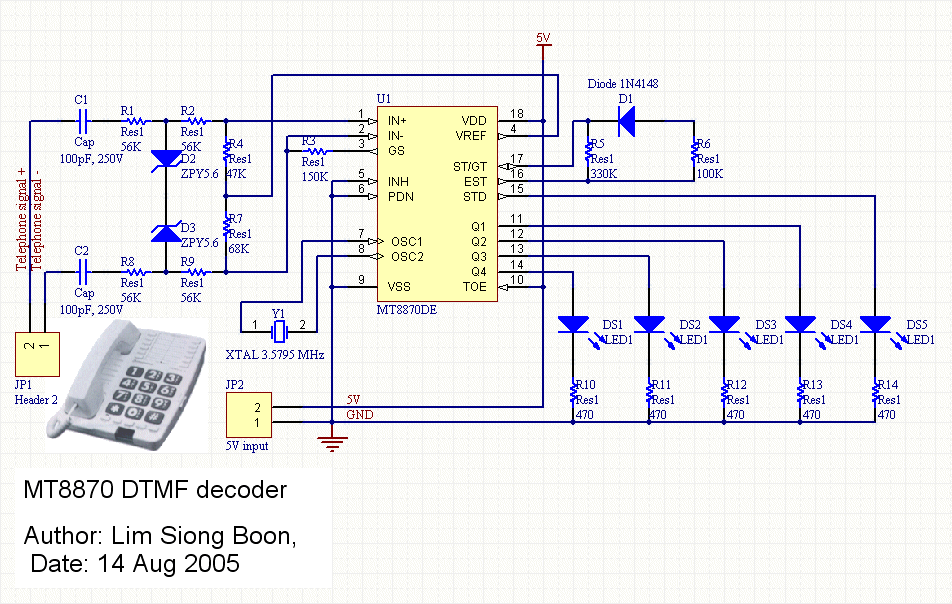
This circuit detects the dial tone from a telephone line and decodes the keypad pressed on the remote telephone. The dial tone heard when picking up the phone is known as Dual Tone Multi-Frequency (DTMF). The term is derived from the fact that the tone consists of two distinct frequency tones. The DTMF tone represents a one-way communication method between the dialer and the telephone exchange. Complete communication involves a tone generator and a tone decoder. The circuit utilizes the MT8870DE integrated circuit (IC) as the primary component to decode the input dial tone into five digital outputs. These digital bits can interface with a computer or microcontroller for further applications, such as remote control and phone line transfer operations. Historically, telephone systems were operated by human operators in exchange rooms, where callers would request connections to their desired destinations. As the demand for telephone communication grew, the reliance on human operators became impractical. Consequently, pulse/dial tone methods were developed for telephony communication, employing electronics and computers to facilitate line connections. On the caller's side, a dial tone generator produces a unique tone when a key is pressed on the matrix keypad. For instance, pressing the key '1' generates a tone composed of 697 Hz and 1209 Hz sine signals, while pressing key '9' produces a tone formed by 852 Hz and 1477 Hz. The frequencies used in the dial tone system fall within the audible range, making them suitable for transmission over telephone cables. On the telephone exchange side, a decoder circuit processes the tone and converts it into a digital code. For example, the tone of 941 Hz and 1336 Hz is decoded as the binary output '1010'. This digital output is read by a computer, which functions as an operator to connect the caller's telephone line to the intended destination. The telephone exchange center generates a high-voltage signal to ring the receiving telephone, alerting the user to an incoming call. This project focuses on a simple DTMF decoder circuit that can interface with a computer, enabling caller-to-computer interaction. Various communication applications can be developed, such as a computerized call receiving/diverting phone network system or remote control of home or office electrical appliances using a telephone network. DTMF is a popular project in the field of digital signal processing (DSP), where software algorithms can be implemented to generate and decode DTMF tones. This project emphasizes hardware implementation.
The DTMF decoder circuit primarily employs the MT8870DE IC, which is designed to decode the dual-tone signals received from a telephone line. The IC operates by detecting specific frequency pairs corresponding to the keys pressed on a DTMF keypad. Each key generates a unique combination of two frequencies, which the MT8870DE processes to produce a binary output that corresponds to the pressed key. The output can be connected to a microcontroller or a computer for further processing, enabling various applications such as automated call routing, remote control systems, and interactive voice response systems.
The circuit typically consists of the MT8870DE IC, a few passive components such as resistors and capacitors for filtering and stabilization, and a power supply circuit to provide the necessary voltage levels for operation. The input from the telephone line is fed into the IC, where it is analyzed for the presence of DTMF tones. The IC outputs a 4-bit binary code representing the pressed key, which can be utilized to trigger specific actions in the connected system.
In practical applications, the DTMF decoder circuit can be integrated with other systems to create a comprehensive communication solution. For example, it can be used in home automation systems where users can control appliances by dialing specific numbers on their phones. Additionally, the DTMF decoder can be incorporated into telecommunication systems to facilitate remote monitoring and control, enhancing the functionality of existing telephone networks.
Overall, the DTMF decoder circuit represents a significant advancement in telecommunication technology, allowing for efficient and automated interactions between callers and various electronic systems.This circuit detects the dial tone from a telephone line and decodes the keypad pressed on the remote telephone. The dial tone we heard when we pick up the phone set is call Dual Tone Multi-Frequency, DTMF in short.
The name was given because the tone that we heard over the phone is actually make up of two distinct frequency tone, hence the name d ual tone. The DTMF tone is a form of one way communication between the dialer and the telephone exchange. A complete communication consist of the tone generator and the tone decoder. In this article, we are use the IC MT8870DE, the main component to decode the input dial tone to 5 digital output. These digital bits can be interface to a computer or microcontroller for further application (eg. remote control, phone line transfer operation, etc. ). In the early days, our phone system used to be operated by human operator in a telephone exchange room.
The caller will pick up the phone, giving instruction to the operator to connect their line to the destination over the other end of the telephone. As more and more people find phone technology a useful communication tools, line connection use human operator has become a tedious task.
As technology matures, pulse/dial tone method was inverted for telephony communication. It uses electronics and computer to assist in the phone line connection. Basically on the caller side, it is a dial tone generator. When a key is being pressed on the matrix keypad, it generate a unique tone consisting of two audible tone frequency. For example, if the key `1` is being press on the phone, the tone you hear is actually consist of a 697hz & 1209hz sine signal.
Pressing key `9` will generate the tone form by 852hz & 1477hz. The frequency use in the dial tone system is of audible range suitable for transmission over the telephone cable. On the telephone exchange side, it has a decoder circuit to decode the tone to digital code. For example, the tone of 941hz + 1336hz will be decoded as binary `1010` as the output. This digital output will be read in by a computer, which will then act as a operator to connect the caller`s telephone line to the designated phone line.
The telephone exchange center will generate a high voltage signal to the receiving telephone, so as to ring the telephone bell, to notified the receiving user that there is an incoming call. This project article focus on a simple DTMF (dual tone multi-frequency) decoder circuit. This circuit can be interface to a computer, allowing caller to computer interaction. Many communication application can be build for example, a computerize call receiving/diverting phone network system.
Remote control to Home/Office electrical appliances using a telephone network. DTMF is a popular project especially in DSP (digital signal processing) subject. DSP software algorithm can be implement to generate as well as to decode DTMF tone. It is very interesting, and I will try to cover that aspect in near future. For now we do the hardware way. 🔗 External reference
The DTMF decoder circuit primarily employs the MT8870DE IC, which is designed to decode the dual-tone signals received from a telephone line. The IC operates by detecting specific frequency pairs corresponding to the keys pressed on a DTMF keypad. Each key generates a unique combination of two frequencies, which the MT8870DE processes to produce a binary output that corresponds to the pressed key. The output can be connected to a microcontroller or a computer for further processing, enabling various applications such as automated call routing, remote control systems, and interactive voice response systems.
The circuit typically consists of the MT8870DE IC, a few passive components such as resistors and capacitors for filtering and stabilization, and a power supply circuit to provide the necessary voltage levels for operation. The input from the telephone line is fed into the IC, where it is analyzed for the presence of DTMF tones. The IC outputs a 4-bit binary code representing the pressed key, which can be utilized to trigger specific actions in the connected system.
In practical applications, the DTMF decoder circuit can be integrated with other systems to create a comprehensive communication solution. For example, it can be used in home automation systems where users can control appliances by dialing specific numbers on their phones. Additionally, the DTMF decoder can be incorporated into telecommunication systems to facilitate remote monitoring and control, enhancing the functionality of existing telephone networks.
Overall, the DTMF decoder circuit represents a significant advancement in telecommunication technology, allowing for efficient and automated interactions between callers and various electronic systems.This circuit detects the dial tone from a telephone line and decodes the keypad pressed on the remote telephone. The dial tone we heard when we pick up the phone set is call Dual Tone Multi-Frequency, DTMF in short.
The name was given because the tone that we heard over the phone is actually make up of two distinct frequency tone, hence the name d ual tone. The DTMF tone is a form of one way communication between the dialer and the telephone exchange. A complete communication consist of the tone generator and the tone decoder. In this article, we are use the IC MT8870DE, the main component to decode the input dial tone to 5 digital output. These digital bits can be interface to a computer or microcontroller for further application (eg. remote control, phone line transfer operation, etc. ). In the early days, our phone system used to be operated by human operator in a telephone exchange room.
The caller will pick up the phone, giving instruction to the operator to connect their line to the destination over the other end of the telephone. As more and more people find phone technology a useful communication tools, line connection use human operator has become a tedious task.
As technology matures, pulse/dial tone method was inverted for telephony communication. It uses electronics and computer to assist in the phone line connection. Basically on the caller side, it is a dial tone generator. When a key is being pressed on the matrix keypad, it generate a unique tone consisting of two audible tone frequency. For example, if the key `1` is being press on the phone, the tone you hear is actually consist of a 697hz & 1209hz sine signal.
Pressing key `9` will generate the tone form by 852hz & 1477hz. The frequency use in the dial tone system is of audible range suitable for transmission over the telephone cable. On the telephone exchange side, it has a decoder circuit to decode the tone to digital code. For example, the tone of 941hz + 1336hz will be decoded as binary `1010` as the output. This digital output will be read in by a computer, which will then act as a operator to connect the caller`s telephone line to the designated phone line.
The telephone exchange center will generate a high voltage signal to the receiving telephone, so as to ring the telephone bell, to notified the receiving user that there is an incoming call. This project article focus on a simple DTMF (dual tone multi-frequency) decoder circuit. This circuit can be interface to a computer, allowing caller to computer interaction. Many communication application can be build for example, a computerize call receiving/diverting phone network system.
Remote control to Home/Office electrical appliances using a telephone network. DTMF is a popular project especially in DSP (digital signal processing) subject. DSP software algorithm can be implement to generate as well as to decode DTMF tone. It is very interesting, and I will try to cover that aspect in near future. For now we do the hardware way. 🔗 External reference
